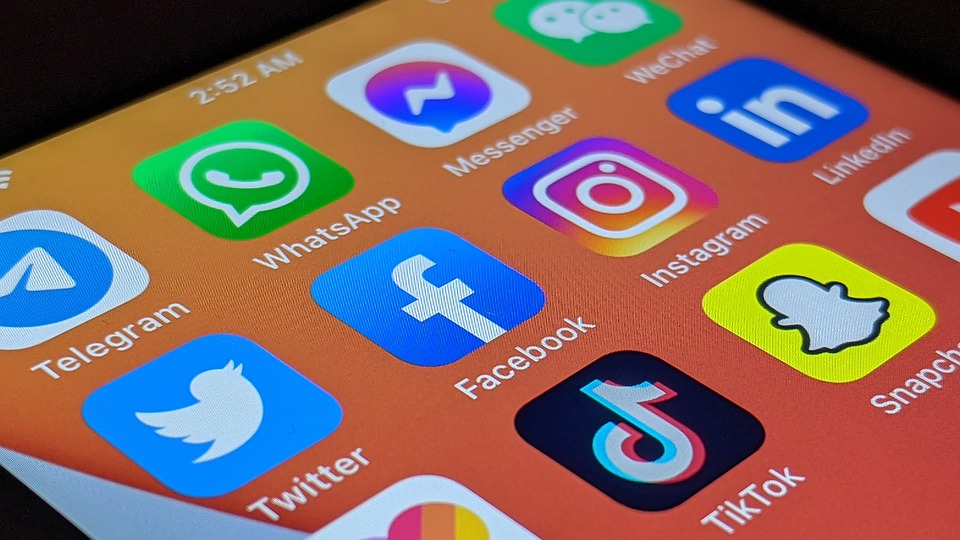In the past, making a living as a creator meant landing a book deal, signing with a record label, or getting hired by a media company. Today, anyone with a smartphone and an internet connection can build an audience—and turn that attention into income.
From YouTubers teaching productivity hacks to TikTokers sharing cooking tips, content creators are redefining what it means to be an entrepreneur. Thanks to the rise of digital platforms, creators no longer need millions of followers to make money. With the right strategy, even a niche audience can become a profitable business with a scalable business model built around content.
In this article, we’ll explore what it means to be a content creator, how the creator economy works, and break down 7 real ways content creators are turning their influence into income. Plus, we’ll share examples of creators who have built thriving businesses around their content.
What Is a Content Creator?
A content creator is someone who produces digital material to educate, entertain, or inspire an audience—usually on platforms like YouTube, Instagram, TikTok, Substack, or blogs. The content can come in many forms: videos, podcasts, articles, social media posts, email newsletters, and more.
But being a creator goes beyond just “posting online.” At its core, it’s about building a connection with a specific audience through consistent, valuable content—and often, turning that attention into a sustainable income.
Common Types of Content Creators:
- YouTubers who publish long-form or short-form videos
- TikTokers who share quick tips, stories, or entertainment
- Bloggers who write educational or opinion-based articles
- Podcasters who host audio shows on niche topics
- Influencers who curate lifestyle or brand content on Instagram
- Newsletter writers who monetize through email communities
- Streamers who entertain live audiences on platforms like Twitch
While each creator type uses different tools and platforms, they all share one thing: the ability to grow influence and trust with an audience—and monetize that connection in creative ways.
What Is the Creator Economy?
The creator economy refers to the ecosystem of independent creators who build audiences online and monetize their content, products, or services—often without needing traditional gatekeepers like publishers, record labels, or agencies.
It’s powered by platforms like YouTube, TikTok, Instagram, Patreon, Substack, and Gumroad, which give creators the tools to publish, grow, and get paid. But beyond the platforms, the creator economy includes tools for analytics, payments, merch fulfillment, community management, and more.
What makes this economy different is that creators are the brand. People don’t just follow creators for what they make—they follow them for who they are. This personal connection unlocks new ways to earn, from brand deals and digital products to memberships and online courses.
Why the Creator Economy Matters
- It empowers individuals to build businesses without investors or a huge team.
- It lowers the barrier to entry for creative entrepreneurship.
- It reflects a shift in how people consume content and make purchase decisions—often guided by trusted creators.
Whether you’re a fitness coach on Instagram or a gamer on Twitch, the creator economy offers a growing number of ways to earn a living doing what you love.
How Do Content Creators Make Money?
Content creators rarely rely on a single source of income. Instead, most build a mix of revenue streams based on their platform, audience size, and niche. Here are seven of the most common ways creators turn their content into cash:
1. Sponsorships and Brand Deals
One of the most common ways content creators make money is through brand partnerships. In this model, companies pay creators to promote their products or services in a way that feels authentic to the creator’s audience.
Sponsorships can take many forms—like a YouTuber mentioning a brand in the first 60 seconds of a video, an Instagram creator posting a product review, or a podcaster reading a sponsored message mid-episode.
Brands are willing to invest because they know that creators have built trust with their audience—a level of influence that often outperforms traditional ads.
Pro Tip: Even smaller creators (known as micro-influencers) can land sponsorships if they have a niche and highly engaged audience.
2. Ad Revenue
Ad revenue is one of the most straightforward ways creators earn money: platforms pay them a share of the income generated from ads shown alongside their content.
On YouTube, for example, creators can enable monetization through the YouTube Partner Program and earn money from ads shown before, during, or beside their videos. Bloggers can do the same using ad networks like Google AdSense, Mediavine, or AdThrive, which place display ads throughout their websites.
Podcast hosts can also monetize through dynamic ad insertion, where sponsors’ audio ads are automatically placed in episodes.
While ad revenue can be passive and scalable, it often requires a high volume of views or traffic to generate meaningful income. The payout varies by industry, audience location, and content type—some niches like finance or software tend to pay significantly more per view.
Many creators use ad revenue as a foundational income stream, then layer on more personalized or higher-margin options like affiliate marketing or product sales.
3. Affiliate Marketing
Affiliate marketing allows creators to earn a commission every time someone purchases a product through their custom link. It’s a performance-based model: the creator only gets paid when their content drives real results, like clicks or sales.
This strategy works especially well for creators who make product reviews, tutorials, or recommendation content. For example, a tech YouTuber might link to the gear they use in their video descriptions, or a wellness blogger could recommend supplements and link to them in an article.
Popular affiliate programs include Amazon Associates, ShareASale, Impact, and affiliate platforms offered by individual brands.
One of the biggest advantages is that affiliate marketing can generate passive income. Once a piece of content ranks well or goes viral, those affiliate links can keep earning commissions long after the post is published.
The key to success is authenticity—creators earn more when they promote products they genuinely use and believe in.
4. Selling Digital Products
Many content creators package their knowledge or creativity into digital products that can be sold directly to their audience. These products are often low-cost to produce and highly scalable—once created, they can be sold repeatedly without additional effort.
Common digital products include:
- eBooks and guides
- Online courses or mini-courses
- Notion or Excel templates
- Photo presets or video LUTs
- Toolkits and downloadable resources
For example, a productivity creator might sell a digital planner or a course on time management, while a designer on Instagram might offer Canva templates or design tutorials.
Platforms like Gumroad, Teachable, Podia, and Sellfy make it easy to host and sell these products.
Because the margins are high and the distribution is instant, digital products are one of the most profitable ways for creators to monetize their expertise—especially when paired with an engaged audience.
5. Memberships and Subscriptions
Memberships and subscriptions offer creators a way to generate recurring revenue by providing exclusive content or perks to their most loyal fans. Instead of relying on one-time purchases, this model creates consistent monthly income.
Creators use platforms like:
- Patreon – for bonus content, behind-the-scenes updates, community access
- Substack – for paid newsletters and premium articles
- Buy Me a Coffee – for donations or member-only posts
- Discord or private communities – for access to Q&As, coaching, or networking
For example, a podcast host might offer ad-free episodes and early access to new content for subscribers. A writer could share in-depth essays only with paying members.
This model works best for creators who have built a strong relationship with their audience and consistently deliver value. Even a small number of paying subscribers can lead to meaningful income over time.
Subscriptions are a powerful way to stabilize income while deepening audience engagement.
6. Physical Products and Merchandising
Some creators expand beyond digital content by launching physical products—either as branded merchandise or standalone consumer products. This approach not only opens a new revenue stream, but also strengthens brand identity and audience loyalty.
There are two main paths:
- Merchandising: T-shirts, hoodies, mugs, stickers, and other branded items
- Product lines: Original products that align with the creator’s niche (e.g. skincare, coffee, planners)
For example, a YouTuber with a strong personal brand might release a clothing line with signature phrases or logos. A lifestyle creator might launch a physical planner or wellness kit.
Creators often use print-on-demand services (like Printful or Teespring) to avoid upfront inventory costs, or Shopify to run their own e-commerce store once demand grows.
This revenue stream is especially effective when the creator’s audience feels part of a larger community or movement—making them proud to wear or use products tied to that identity.
7. Paid Events, Coaching, and Consulting
As creators build authority in their niche, many begin offering direct access to their expertise through paid events, 1:1 coaching, or consulting services. This model allows creators to monetize their knowledge at a higher price point—especially with a smaller, more engaged audience.
Examples include:
- Workshops or Masterclasses – Live Zoom sessions or in-person meetups
- Group Coaching – Recurring programs with limited seats
- 1:1 Consulting – Personalized advice or services, often billed hourly or per project
- Speaking Engagements – Paid appearances at conferences or webinars
For instance, a fitness creator might host a paid 4-week training program, or a content strategist could offer private sessions to help other creators grow their platforms.
This revenue stream is time-intensive, but highly profitable, and ideal for creators looking to build deeper relationships with clients or position themselves as experts in their field.
Examples of Successful Creator Businesses
To better understand how these revenue streams come together in real life, here are a few creators who’ve built full-fledged businesses around their content:
Ali Abdaal – YouTuber and Productivity Educator
Ali started as a medical doctor creating videos about studying and productivity. Over time, he turned his channel into a multi-million dollar business by combining ad revenue, affiliate links, sponsorships, and digital product sales. His flagship product? A course on how to grow a YouTube channel, earning hundreds of thousands in revenue annually.
Revenue Streams Used: Ad Revenue, Sponsorships, Affiliate Marketing, Online Courses, Coaching, Newsletter.
Emma Chamberlain – YouTuber and Lifestyle Creator
Emma went from filming casual vlogs in her bedroom to becoming one of the most recognizable faces in Gen Z culture. She monetized through brand deals early on, but later launched her own coffee brand, Chamberlain Coffee, turning her influence into a product-based business.
Revenue Streams Used: Sponsorships, Ad Revenue, Merchandising, Physical Products (DTC brand).
Lenny Rachitsky – Writer and Community Builder
Lenny started a newsletter about product management on Substack. With thousands of paid subscribers, he quickly turned it into a six-figure business. He also launched a course and built a private Slack community, adding layers to his monetization strategy.
Revenue Streams Used: Subscriptions (Substack), Digital Products (courses), Community Access.
Vanessa Lau – Instagram and YouTube Coach
Vanessa built a following teaching creators how to grow their social media presence. She scaled her business through coaching programs, paid courses, and high-ticket consulting. Her YouTube videos fuel lead generation, making content the entry point to her business.
Revenue Streams Used: Digital Products, Coaching, Consulting, Ad Revenue, Affiliate Marketing.
Marques Brownlee (MKBHD) – Tech YouTuber
Known for his high-quality tech reviews, Marques has turned his channel into a full media company. He generates income through YouTube ads, high-profile brand deals, affiliate links, and product collaborations. He’s also expanded into podcasting and merchandise.
Revenue Streams Used: Ad Revenue, Sponsorships, Affiliate Marketing, Merchandising, Podcasting.
MrBeast – YouTuber and Entrepreneur
MrBeast (Jimmy Donaldson) is one of the most well-known creators on the planet, famous for his high-budget challenge videos. But beyond viral content, he’s built an empire that includes a snack brand (Feastables), a fast food chain (MrBeast Burger), and a merch business. His content reinvestment model—where he puts most of the revenue back into production—has turned his channel into a business machine.
Revenue Streams Used: Ad Revenue, Sponsorships, Merchandising, Physical Products (CPG brands), Affiliate Marketing, Licensing, Brand Collaborations
Final Thoughts
The creator economy has completely reshaped how individuals build careers, start businesses, and earn a living online. What once required a publisher, production team, or investor can now be done with a smartphone, a platform, and an audience.
As we’ve seen, content creators don’t rely on a single revenue stream. The most successful ones diversify—layering ad revenue with product sales, affiliate marketing, coaching, or subscription models. Some stay small and niche; others scale into full-fledged companies.
Whether you’re just getting started or looking to grow, the key is to understand your audience deeply and choose the monetization paths that align with your content, your strengths, and your long-term vision.
You don’t need millions of followers to make it work. You just need the right mix of content, consistency, and creativity.






